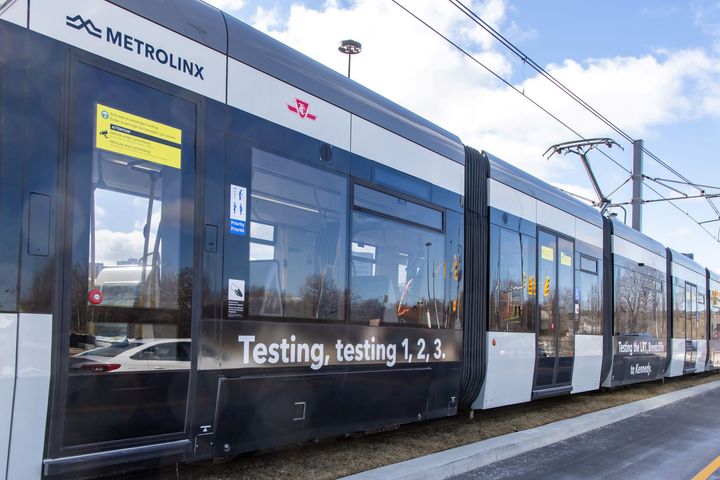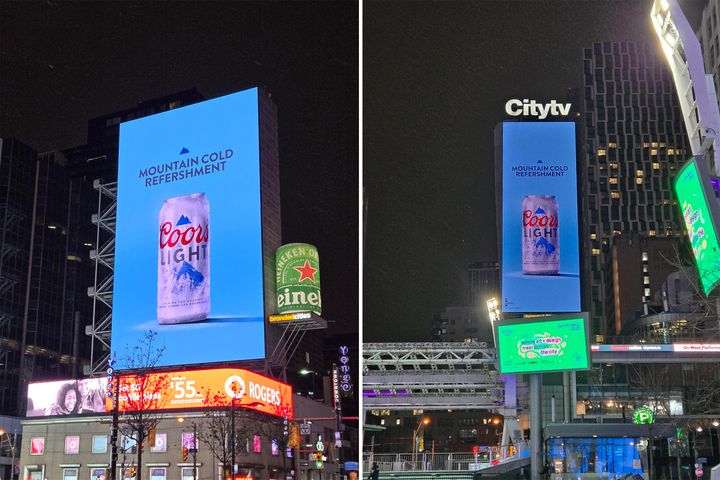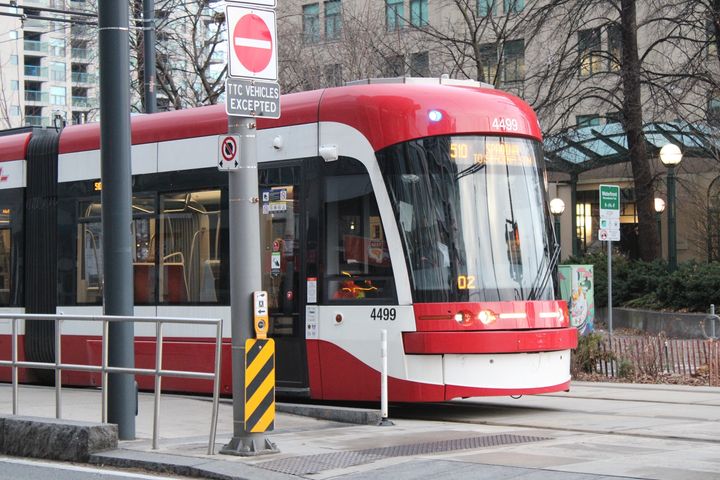TTC subway station just underwent a huge change to prepare for Crosstown LRT
In some parallel universe, Toronto commuters are filing onto an Eglinton Crosstown LRT train right now. However, in our reality, the embattled transit line remains a delay-stricken mess with no opening date in sight.
Despite a lack of public confidence that the Crosstown will ever open, important work continues in preparation for the future Line 5 Eglinton's connections with the TTC's Line 1, including a huge milestone that was just completed at Eglinton Station.
Commuters using the busy midtown subway station on Monday are finding themselves in an unfamiliar setting, as the TTC has extended the station platform to the north.
This northerly platform extension allows trains to stop further north than the previous configuration, a necessary change to accommodate construction linking the platform with the connected, but yet-to-open, Crosstown station.
The new platform extension at Eglinton Station is officially open! This extension connects you to the future Line 5 Eglinton Station. [THREAD] pic.twitter.com/3lcSLIXpra
— TTC Customer Service (@TTChelps) May 15, 2023
The south end of the subway platform where this construction is taking place has been walled off with hoarding, as work crews link the two station components with a new escalator and elevator.
For now, the platform extension remains in a raw state with unfinished concrete walls and exposed electrical infrastructure.
👀 Here's a peek at the new subway platform extension at Eglinton Station that goes into service tomorrow. The train will stop a bit further down the platform from where it does today, but the elevator and staircase at the south end of the platform are just a short distance away. pic.twitter.com/15MyPkszGM
— TTC Customer Service (@TTChelps) May 13, 2023
The iconic Vitrolite glass tile finish (which once lined all Yonge subway stations but now exists solely at Eglinton) present on the main section of platform to the south is conspicuously absent on the platform extension, though the TTC has stated that the platform's current look does not represent the final aesthetic.
No it won't. ^KG
— TTC Customer Service (@TTChelps) May 14, 2023
There is doubt over whether the new finishes will match the original platform section to the south. Vitrolite isn't easy to come by in the 21st century, as the pigmented glass tiles are no longer in production, typically acquired through salvage and restoration.
I don't think the #TTC has any extra stock. It's probably the same for Christie and a few other stations. Is it me or the camera angle? The font size and style Eglinton doesn't appear to be the same as the rest of the stations.
— 🇨🇦 Howie💉💉Lem💉💉(4 shots & counting) (@can_twitr) May 13, 2023
In spite of all the negative news coverage of the Crosstown over the last several months of delays and challenges, the opening of this platform extension serves as an encouraging milestone that commuters can actually experience in person.
TTC
Latest Videos
Latest Videos
Join the conversation Load comments







